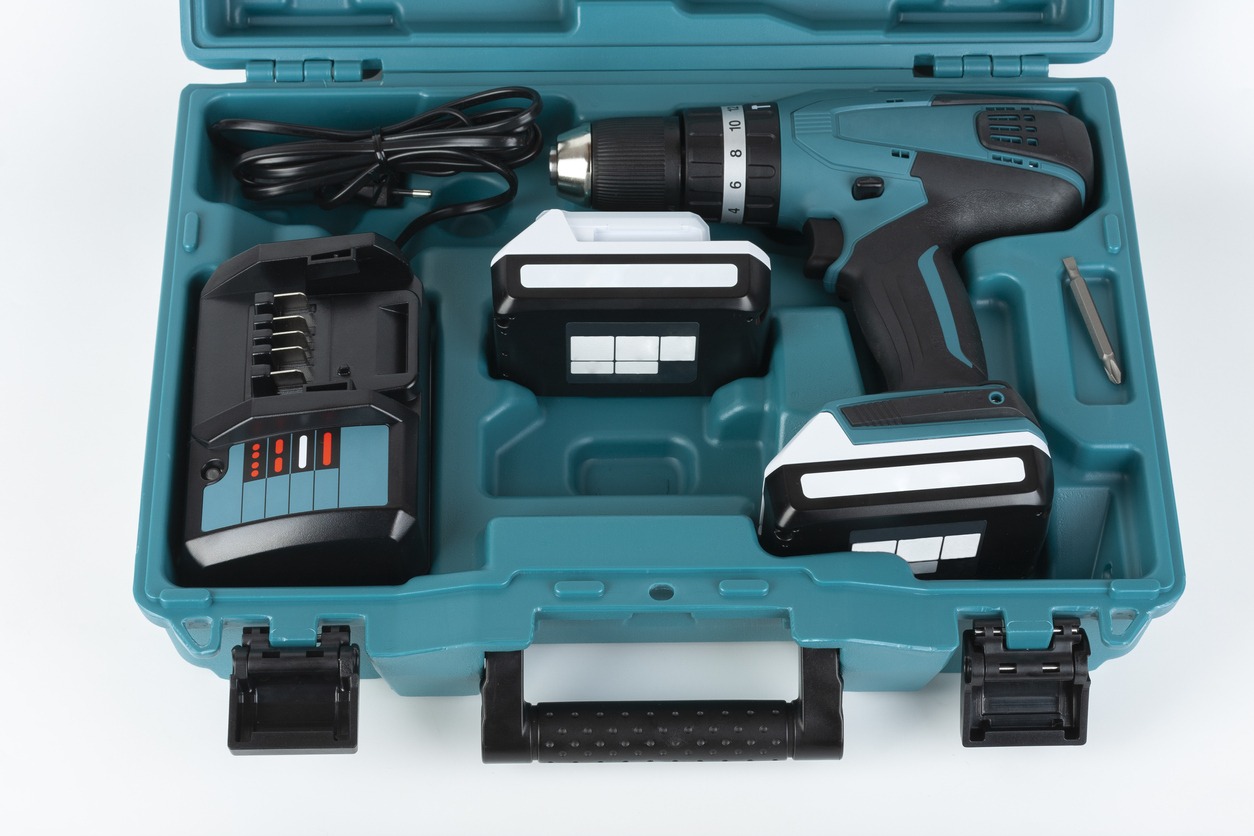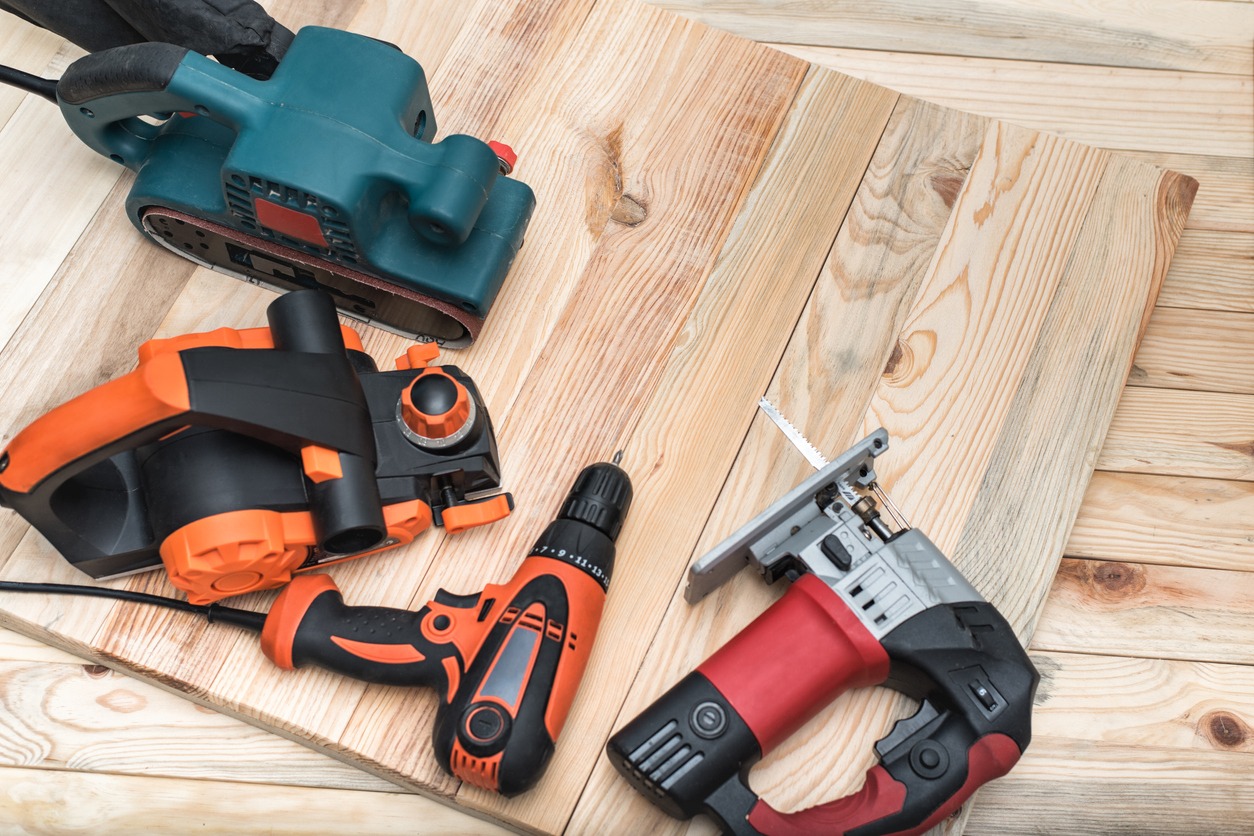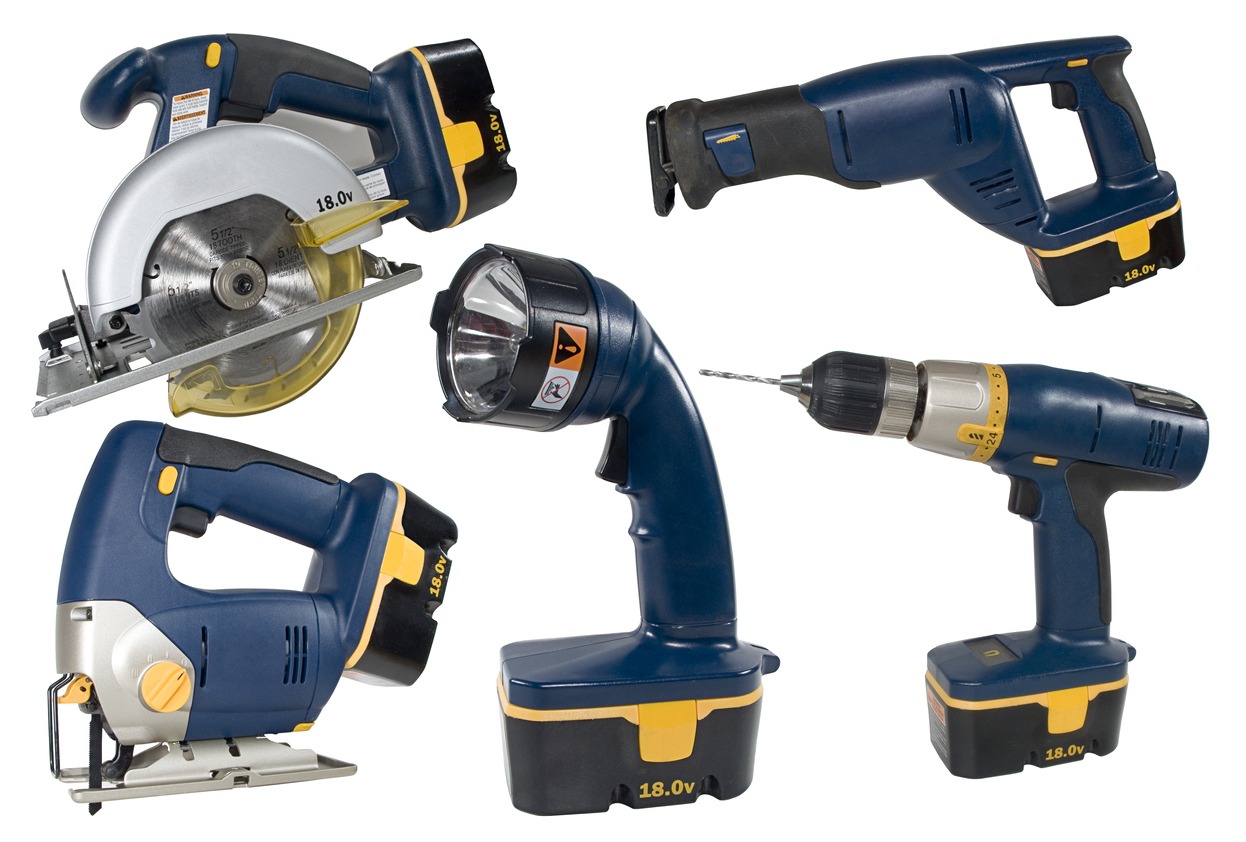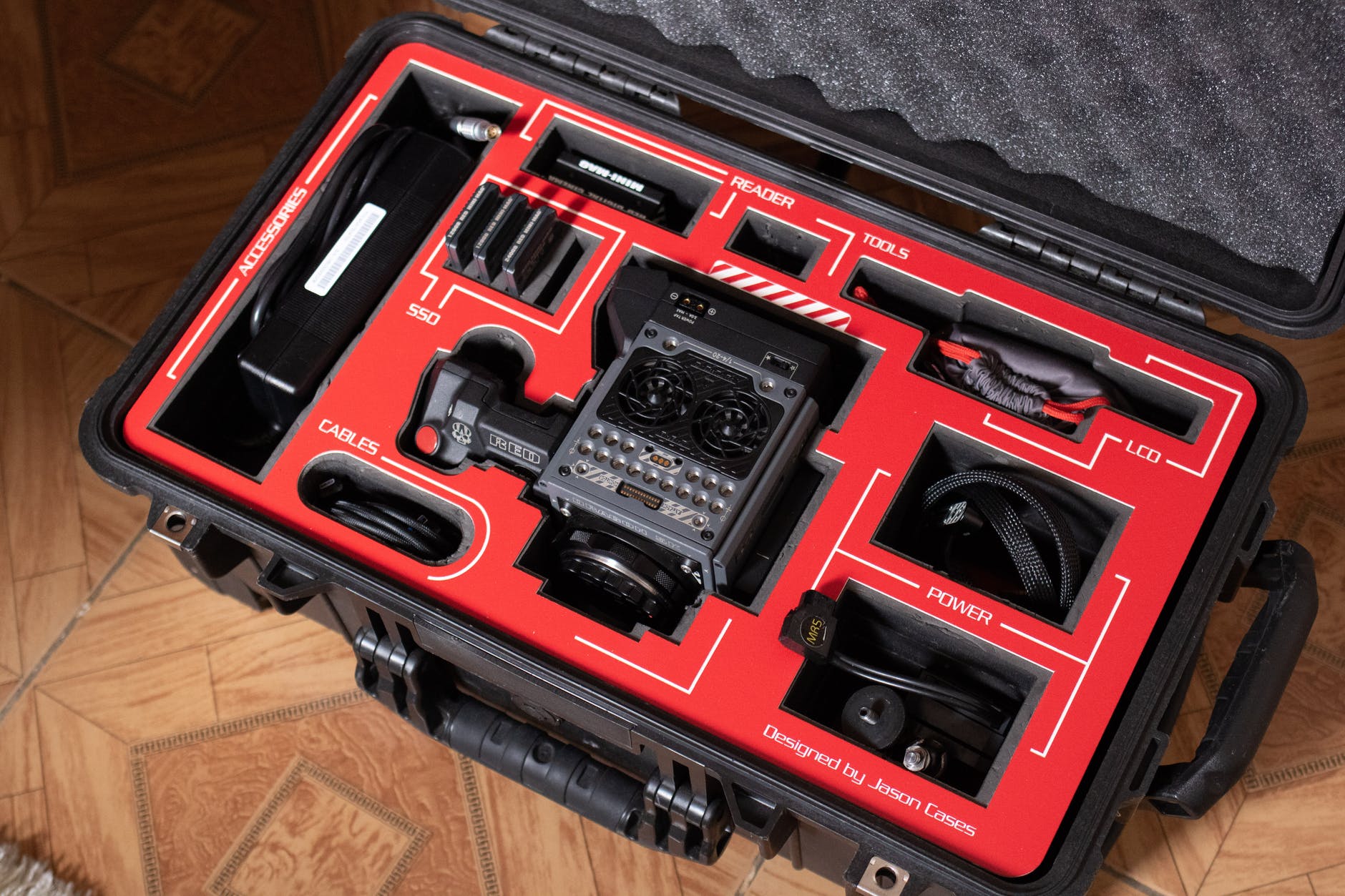With the rising prices of housing and home improvement, many homeowners now find it more efficient and cost-effective to do small renovations and tasks on their own. Several people also take up woodworking, carpentry, or a similar hobby.
These projects require the right tools, especially power tools for more heavy-duty tasks. However, it can get expensive and time-consuming to buy power tools individually. This is why many power tool companies now offer single sets that include various power tools.
What Does a Power Tool Combo Kit Include?
Power tool combo kits come in various shapes and sizes, and with different kinds of tools. Here are some of the most common inclusions in such kits:
2-tool kits: usually including drilling and driving tools such as drill and drivers, impact driver with fasteners
3-tool kits: replace one or both driving tools e.g. circular saw, oscillating tool
4-tool kits (and more): the combo of four, five or more pieces includes a variety of tools and usually include drill/driver, impact driver, reciprocating saw, circular saw, oscillating tool, right-angle drill and a flashlight
Heavy-duty Combo Power Tool Kits: These include full-size tools for professional work such as a circular saw, a reciprocating saw, a jigsaw, a hammer drill and an angle grinder
With so many options out there, it can get tough to make a final decision on which power tool combo kit to buy. The following will hopefully help to narrow down your options and lead to a more informed choice:
Types of Power Tool Combo Kits
Before coming to your requirements for a power tool combo kit, you have to look at what’s available. These kits come in many types, with the three main options being corded, cordless, and combination. There are also some other categories to consider, so let’s take a look at them.
Corded Power Tool Kits
A set with corded power tools will give you more power as you have more power at your disposable then what a battery usually has to offer. With their higher torque, these tools will be more useful in cutting applications. Since they’re plugged in, you get a steady stream of power for as long as you wish (barring a blackout or power cut). This also ensures that the tool will keep working at around the same performance level as at the beginning of the session.
On the downside, the cord also means limited movement. This could be frustrating if you’re working on a large project or want to work outside. Wrapping up the cords and finding a safe space for them is also troublesome when it’s time to store your tools. Even while working, you have to be very careful of the cord; it might get damaged by sharp edges or hurt someone by tripping them up.
Cordless Power Tool Kits
Some DIY hobbyists might prefer a cordless power tool combo kit. They’re convenient; you can take them to different areas of the workshop or even outside if required. With a combo power tool kit, one charger may be enough for several tools. Cordless tools are also easier to store–you can hang them up or put them on a shelf while the cords stay in a separate compartment.
On the other hand, you also compromise on the level of performance with a cordless power tool. It will take time to charge everything you need. Plus, it’s annoying when a tool loses its charge or starts performing weakly just as you’re getting into the flow of your work.
Combination
Some power tool combo kits might have a mixture of corded and cordless power tools. This might be the best of both worlds, as the user can select a corded option for a tool that needs constant and dependable power. They can go for cordless options where portability is the priority.
Tool count
Some power tool combo kits have just two or three basic items, while others may contain seven or more. Your final decision will mostly depend on what you need right now, but future requirements are also an important factor.
It might be useful to assess your current power tool needs and see where you want to take this interest in the future. If you see yourself using a jigsaw some time from now, it might be a good idea to invest in a larger kit that includes this tool.
Key Features to Consider in Power Tools Kits
When choosing your power tool combo kit, look for the following features:
Power and performance
Look at the amp hours and voltage of the included batteries. Tools having lower-voltage batteries will be light, and those with higher voltage will be heavier, but will provide more power. The amp-hours determine the runtime of the cordless tools–the higher the better.
Durability
Some lighter tools may not last very long, but it really depends on their make and material quality. Make sure to read the reviews before buying and take note of any complaints about product durability.
Versatility
Sets offering two batteries will usually make it easier to work using multiple tools. If you already have cordless tools, it might be feasible to look for kits that are of the same brand or at least compatible with their chargers and batteries. Certain batteries can be used to power several types of tools, which can help you build up a large tool collection without having to keep track of several brands.
Carrying bag or case
Most power tool kits come with their own carrying case, toolbox, or storage bag. If you already have room in your storage or toolbox, this factor shouldn’t matter much if your projects are usually in one place. For working in different locations, though, a power tool combo kit should ideally have its own case. Along with being convenient, a dedicated case will also ensure that the items inside stay safe and protected.
Consider Your Needs
When selecting a power tool combo kit, consider your needs for your ongoing and planned projects. Here are a few examples of what a user might need from such a kit:
- A homeowner who has just started DIY projects and needs a starter tool kit
- Someone who wants more heavy-duty options in order to tackle tough tasks
- Someone requiring an addition to the tool collection so that they can take on different kinds of projects
- Someone needing various additional tools to meet their frequency of use
Top Brands
Some of the top brands for power tools include Makita, Milwaukee, and DeWalt. Makita is known for the value it offers, along with a useful grouping of tools in its kits. Milwaukee especially focuses on providing trade-specific tools for plumbing, mechanical, and electrical projects. At times, this brand will provide solutions that even its top competitors won’t have.
DeWalt will probably be the best option for tough onsite job conditions.
Before buying any tool set, make sure to read user reviews and know what the packaging includes. Other good brands to consider include Craftsman, Bosch, Porter-Cable, Ryobi, and Black+Decker.
Budget
Power tool kits from known brands will probably be on the expensive side. Along with the quality, you’re also paying for the warranty, the name, and the tried-and-tested performance of these products.
When you’re on a budget, you may need to compromise on certain elements of your power tool combo kit. For instance, having a kit with several different tools might be tempting at this point. However, getting a large kit with several accessories from a well-reputed brand will be quite expensive. If you can make do with just the basics, getting a small kit with high-quality components is a better option in the long run. You can add more tools to the inventory later, but you should not compromise on the quality of power tools.
Accessories
Here are the accessories that can make your power tool combo set reach its full potential:
- Drill and Driver Bits: These are necessary when you want to use an impact driver or a drill/driver. A good bit collection will have different sizes and varieties in addition to a quick-change bit holder
- Saw Blades: Multipurpose or specialized blades will help in cutting most materials, including metal, concrete, masonry, etc
- Safety Equipment: This may include gloves, a face shield, or things you need when working with power tools in the kit
- Storage: A carrying case or bag will help to keep your tools organized and avoid damage
- Extra Batteries and Extra Charger: Having a spare battery and charger on hand will help ensure that each tool is ready for work when required
- Chuck: A chuck measuring above 10mm is necessary for larger drill bits
Maintenance
Power tools have certain maintenance requirements; following these can increase the longevity of each tool and maintain their performance in the long run:
Cooling Down
If you feel a power tool getting too hot while working, let it cool down to relieve the stress on the motor.
Cleaning
Clean each tool at the end of your work session and before storing them away. Wipe off the debris and dirt using a cleaning cloth. Also, it’s better to use compressed air instead of a brush to clear the vents of any particles.
Lubrication
This is an essential step that can keep the moving parts working as they should. Make sure to consult the owner’s manual tool maintenance sections and carefully follow the instructions before lubricating your power tools. Proper lubrication will also prevent the various parts from corrosion, heating up, chafing, etc.
Battery Care
Modern power tools usually have lithium-ion batteries. Make sure to manage their heat properly, as overheating can damage these batteries beyond repair. The batteries should also be stored in a climate-controlled place. They will also need recharging before they’re completely drained.
Sharpening Bits and Blades
Worn-out bits or blades will require you to put more pressure on the tool, which can be both tiring and dangerous. Save the excess stress on the tool’s motor by regularly sharpening these accessories.
Calibration
Since power tools have several moving parts, they are precision instruments and need regular alignments. Read the user’s manual and follow the tool maintenance schedule it provides. Some companies may even have calibration services for their specific products.
Replace When Worn
Check the various parts of your power tools regularly and replace them immediately when they’re worn out. Carbon brushes are a common replacement, along with drive belts, switch assemblies, and power cords.
Safety
Power tools can cause a lot of damage and harm when used improperly, so do follow the right protocols when handling the combo kits as well as individual items. Read the instructions and other guidelines for each tool and follow your local safety regulations at all times.
Safety Gear
Here is the most common safety equipment for working with any power tool set:
- Eye protection such as goggles, safety glasses, or helmets
- Hearing protection like noise-canceling headphones, earplugs, or earmuffs
- Respirator/safety mask
- Work gloves–leather, Kevlar, rubber, etc
Depending on the tools or materials you’re working with, the following gear is also important:
- Steel-toed footwear
- Hard hat
- Fall protection equipment
Conclusion
Choosing a power tool combo kit is easier when you know the requirements of your projects. Whether you’re just starting out with DIY or already have some experience in this field, getting a kit with several tools can be a useful investment. Once you’ve decided on the kind of tools required, make sure that your shortlisted kits have all the key features necessary for the tasks at hand. Take your specific needs into account and see whether your budget allows for a purchase from the top power tool brands.
With proper maintenance and safety precautions, your power tool combo kit will hopefully provide great value for money. If you’re ready to start the final selection for your power tool kit, aim for the best quality available in your required price range. Even if you have to go a little over your budget, the added performance and safety will be worth it.



